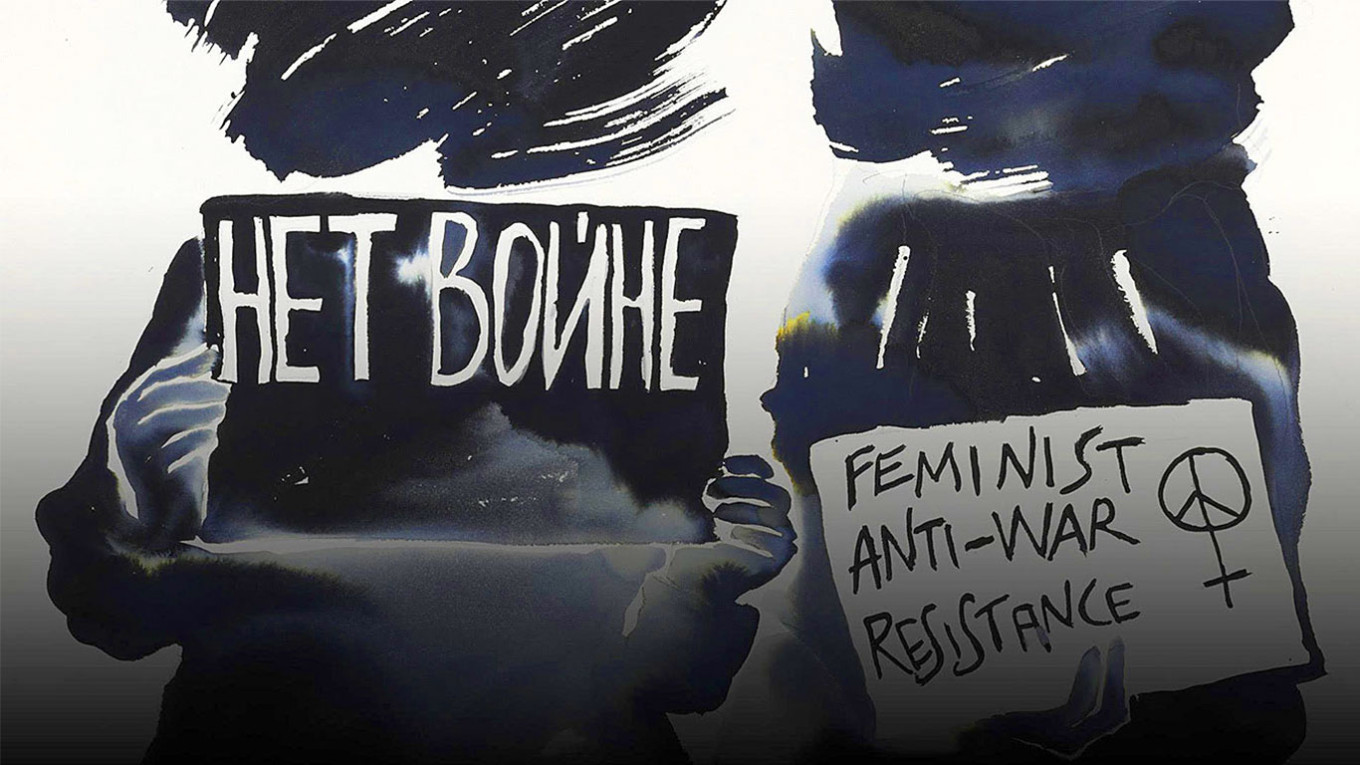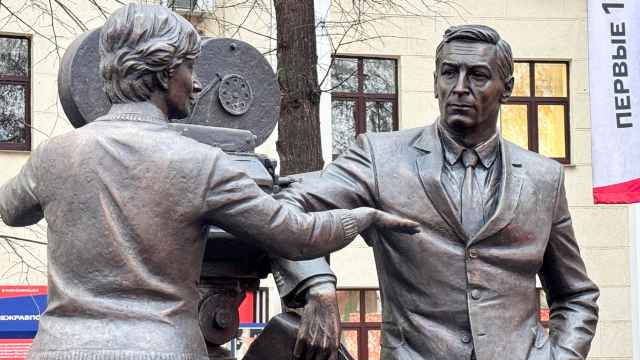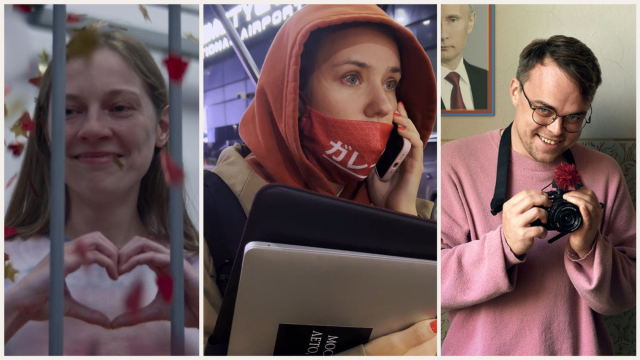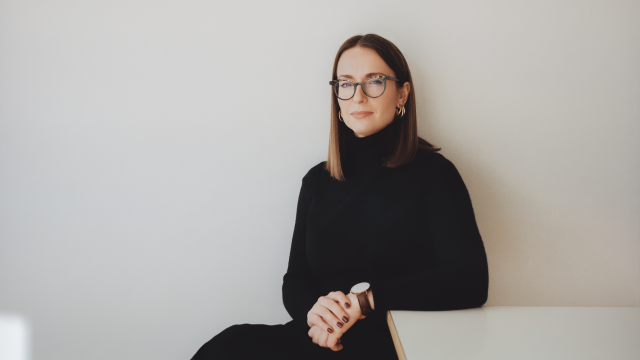This summer Pushkin House, London’s flagship independent center for Russian culture, is hosting the exhibition “Women in Black Against the War” by Russian multi-media artist Katya Muromtseva. Muromtseva, 33, has exhibited in Moscow’s Garage Museum of Contemporary Art and the Museum of Contemporary Art, as well as in the U.S. and Japan.
The show is not large, but it makes a powerful impression. Two rooms are lined with monochrome watercolours of people which flicker in and out of abstraction. Downstairs are the portraits of political prisoners with each one’s “crime” handwritten underneath. Upstairs are the haunting figures of the eponymous Women in Black. These are the members of the Feminist Anti-War Resistance, a movement founded in Russia in February 2022. All the events at Pushkin House this month are taking place against the backdrop of Muromtseva’s paintings, keeping the war in Ukraine and repressions in Russia in the full view of visitors.
The Moscow Times spoke with Muromtseva about the show, her work, and her subjects. The interview has been edited for length and clarity.
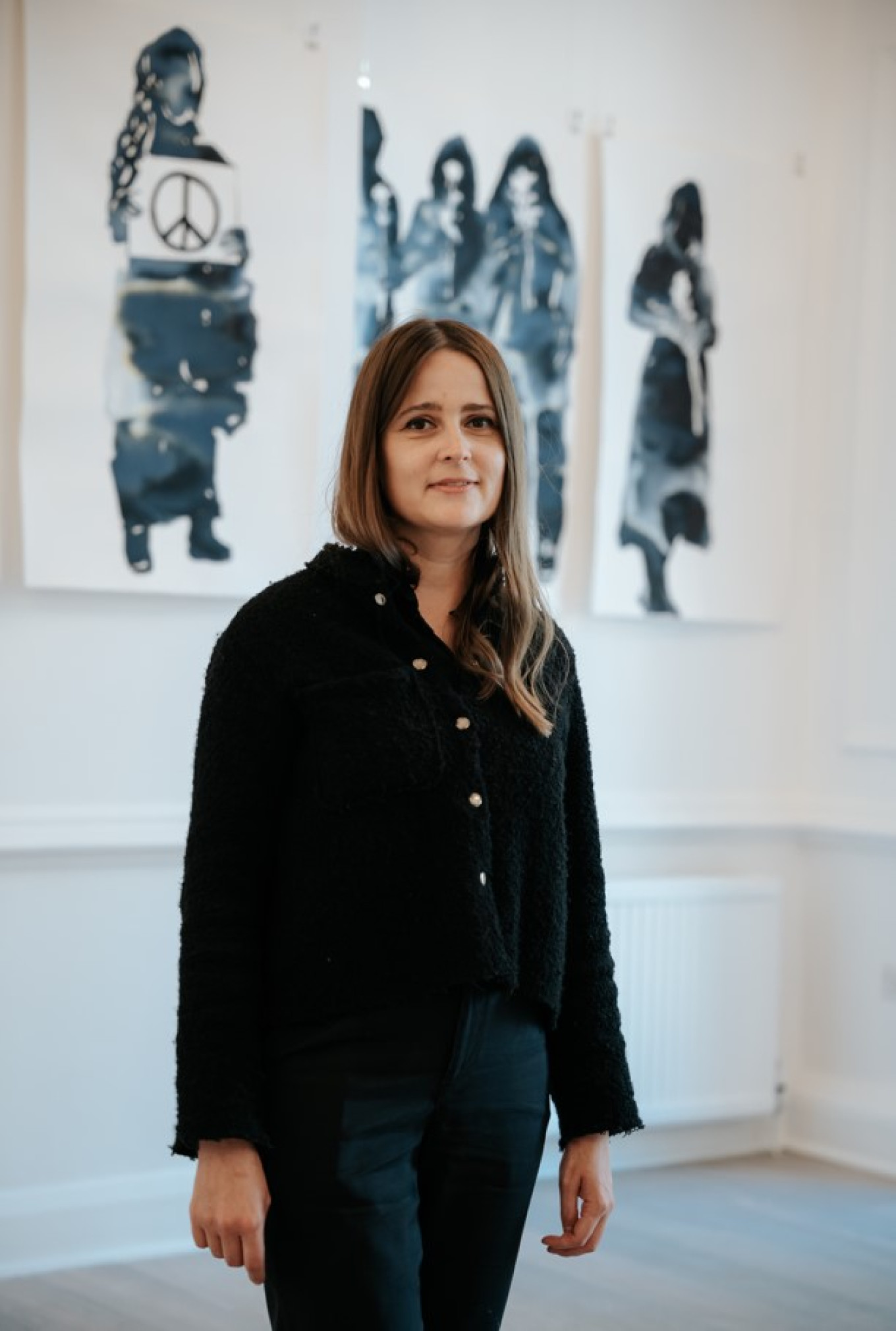
The Moscow Times: How did you come up with the idea for this exhibition?
Katya Muromtseva: I started painting these pictures right after the war started. At the time I felt really down, as if my work didn’t mean anything. Then my friends in the Feminist Anti-War Resistance started organising protests, and I started documenting them. They were inspired by earlier protests in the Israel-Palestine conflict, where women would go into public spaces dressed in black, as if in mourning.
TMT: Do you think these kinds of protests in Russia have become less common as the war has progressed?
KM: More common, I would say, but they are hidden. Everything is anonymous, that’s why my figures have no faces.
TMT: Your portraits of political prisoners do have faces. Is there a gap in Russia between those who are prepared to expose themselves and those who hide?
KM: Certainly there is a gap, although I would say that not all the people who were incarcerated expected to be arrested. That was a result of the new laws they introduced, like the law against discrediting the Russian army. People didn’t think they would be arrested for a simple act like holding up a piece of paper.

TMT: Is there a gendered aspect to the response to the war?
KM: Yes, I think so. The group Feminist Anti-War Resistance is very active, and they are also trying to save feminism inside Russia.
TMT: Could you talk a bit about your process. Why watercolors?
KM: I work on the floor with very large pieces of paper, and I can’t always control how it will look at the end. It is unpredictable, like life is, and that’s what I enjoy as an artist. My paintings take two days to dry because I use so much water.
TMT: How has your work developed over time?
KM: Originally, it was more about the images, and less documentary, less political. After the arrest of [Meduza journalist] Ivan Golunov [in 2019] I became very involved in protesting. I’m not sure why I took it so personally, but I couldn’t believe they would imprison this man. And after that, I started to document what was happening around me. All the paintings in this exhibition show real people.
TMT: Have you had much of a response from inside Russia since your show started?
KM: No. Almost none.
TMT: Do you have any contact with the Moscow art world?
KM: I still have my gallery, XL, in Moscow. I don’t participate in any shows in the state museums anymore, and I haven’t done any solo shows there since the war started. But I think it’s important to support initiatives by the people who are left who share my views.
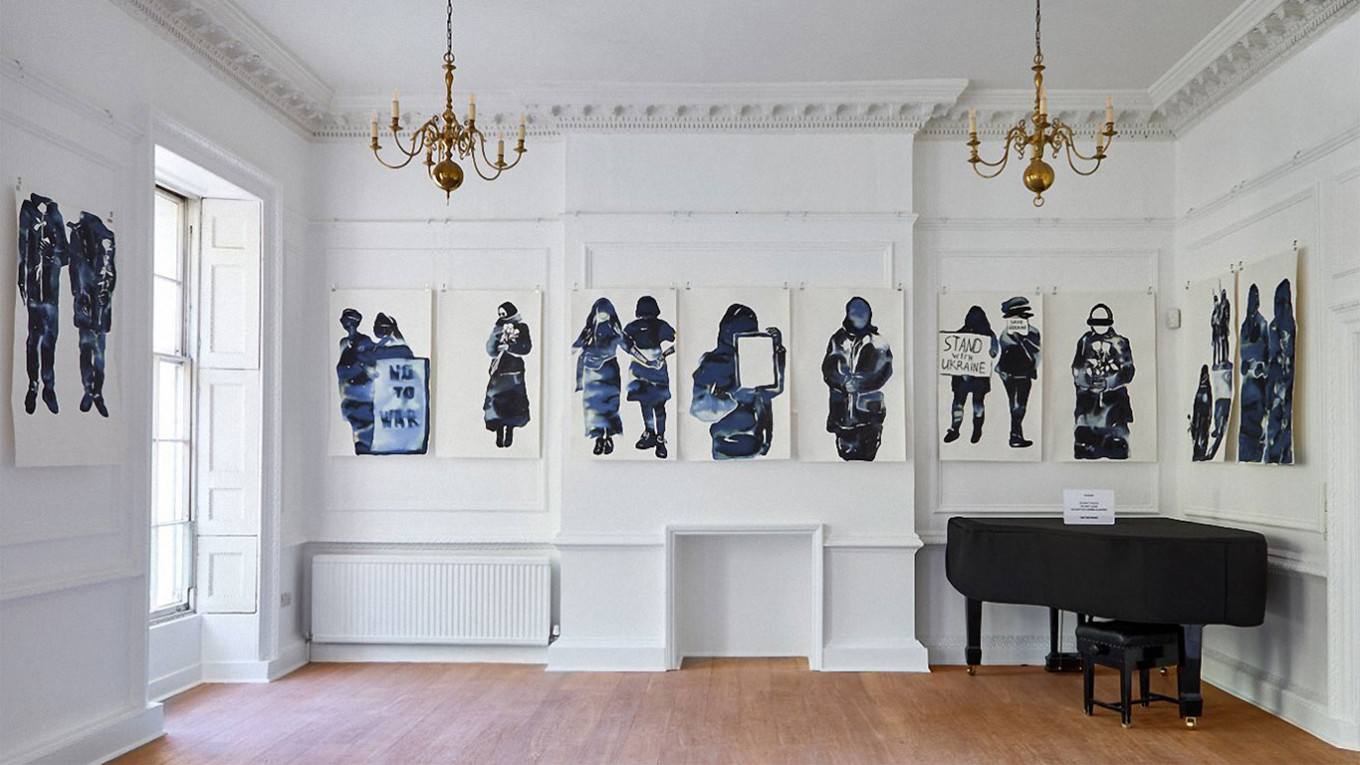
TMT: Looking at your other work, it seems a balance of reality and fantasy is important to you. Is that right?
KM: Very important. A few years ago I made a film called “In This Country” with shadow puppets, where I used stories from school children. They had to write an essay about what life was like in the Soviet Union. Of course, they hadn’t lived there at all, but their parents or grandparents had…it was amazing, what these kids came up with! The queue for sausages went on for 25 kilometers…
TMT: Is there room for imagination in these times?
KM: I hope so. Of course, I can’t predict how my work will make people feel, but I know that no matter what you do, you can act. I think if I were something else – a politician, perhaps, my response would be different. I was already an artist. You have to implement whatever talent you have, and work from where you are standing.
Women in Black Against the War is showing at Pushkin House until July 29.
A Message from The Moscow Times:
Dear readers,
We are facing unprecedented challenges. Russia's Prosecutor General's Office has designated The Moscow Times as an "undesirable" organization, criminalizing our work and putting our staff at risk of prosecution. This follows our earlier unjust labeling as a "foreign agent."
These actions are direct attempts to silence independent journalism in Russia. The authorities claim our work "discredits the decisions of the Russian leadership." We see things differently: we strive to provide accurate, unbiased reporting on Russia.
We, the journalists of The Moscow Times, refuse to be silenced. But to continue our work, we need your help.
Your support, no matter how small, makes a world of difference. If you can, please support us monthly starting from just $2. It's quick to set up, and every contribution makes a significant impact.
By supporting The Moscow Times, you're defending open, independent journalism in the face of repression. Thank you for standing with us.
Remind me later.



